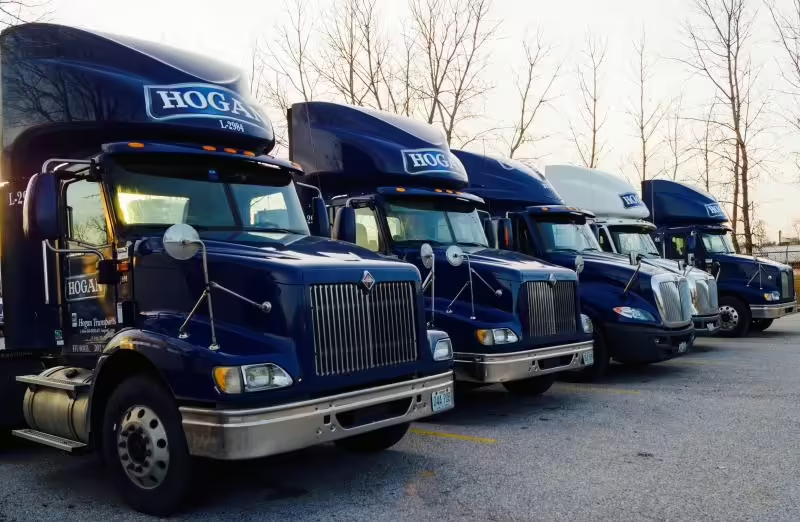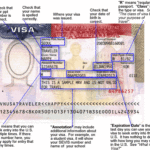How to Become a Truck Driver in the USA as a Foreigner: Visa Requirements and Steps to Work Legally
Introduction
The United States offers vast opportunities for truck drivers due to its expansive geography and booming logistics industry. However, becoming a truck driver in the U.S. as a foreigner involves navigating a complex visa application process and meeting specific requirements. This guide will walk you through everything you need to know to secure a job as a truck driver in the U.S., including visa options, licensing requirements, and tips for finding employment.
1. Visa Requirements for Truck Drivers
To work as a truck driver in the U.S., you must obtain a visa that allows employment. Here are the most relevant visa types for foreign truck drivers:
H-2B Visa (Temporary Non-Agricultural Workers):
- Overview: The H-2B visa is the most common option for foreign truck drivers. It allows U.S. employers to hire foreign workers for temporary non-agricultural jobs, including truck driving.
- Eligibility: To qualify, you must be from a country eligible for the H-2B program. The U.S. Department of State updates the list of eligible countries annually.
- Application Process: The process starts with the U.S. employer submitting a petition to the U.S. Citizenship and Immigration Services (USCIS). Once approved, the foreign worker applies for the H-2B visa at the U.S. Embassy or Consulate in their home country.
- Duration: The H-2B visa is typically granted for up to 10 months but can be extended in certain cases. However, you must return to your home country once the visa expires.
TN Visa (NAFTA/USMCA for Canadians and Mexicans):
- Overview: Under the United States-Mexico-Canada Agreement (USMCA), formerly NAFTA, qualified Canadian and Mexican citizens can apply for a TN visa to work in the U.S.
- Eligibility: To qualify as a truck driver, you must have a job offer from a U.S. employer and meet any specific requirements outlined in the USMCA.
- Application Process: Canadian applicants can apply directly at a U.S. port of entry or airport, while Mexican applicants must apply through a U.S. Embassy or Consulate.
- Duration: The TN visa is granted for up to three years, with the possibility of renewal.

Other Visa Options:
- L-1 Visa (Intracompany Transfer): If you’re employed by a multinational company with operations in the U.S., you might qualify for an L-1 visa as an intracompany transferee.
- E-2 Visa (Investor Visa): If you’re investing in a trucking business in the U.S., you might qualify for an E-2 visa.
2. Licensing Requirements
Once you’ve secured a visa, the next step is obtaining the necessary licenses to work as a truck driver in the U.S.
Commercial Driver’s License (CDL):
- Eligibility: To drive a commercial vehicle in the U.S., you must obtain a CDL. Requirements vary by state, but generally, you must be at least 18 years old (21 for interstate driving) and pass a medical examination.
- Training: Many states require truck drivers to complete a training program at an accredited truck driving school. These programs typically last between 3 to 6 weeks and cover both classroom instruction and hands-on driving experience.
- Examinations: To obtain a CDL, you must pass a written knowledge test and a road skills test. The tests cover topics such as vehicle inspection, basic control skills, and safe driving practices.
- Endorsements: Depending on the type of truck you’ll be driving, you might need additional endorsements on your CDL, such as hazardous materials (HazMat) or double/triple trailers.
Foreign License Conversion:
- Reciprocity Agreements: Some states have reciprocity agreements with other countries, allowing you to convert your foreign truck driver’s license to a U.S. CDL without retaking the tests.
- No Reciprocity: If your home country doesn’t have a reciprocity agreement with the U.S., you’ll need to obtain a new CDL by meeting the state’s requirements.
3. Employment Opportunities for Foreign Truck Drivers
With your visa and CDL in hand, it’s time to find employment as a truck driver in the U.S.
High-Demand Regions:
- Southern and Midwestern States: These regions often have the highest demand for truck drivers due to their central location and strong manufacturing sectors.
- Long-Haul Routes: Drivers willing to work long-haul routes, especially across multiple states, are in high demand.
Job Search Strategies:
- Job Boards and Recruitment Agencies: Websites like Indeed, Monster, and specialized trucking job boards such as TruckingJobs.com can help you find open positions. Recruitment agencies that specialize in placing foreign workers in U.S. jobs can also be a valuable resource.
- Company Sponsorship: Some trucking companies are willing to sponsor foreign workers’ visas, particularly those facing driver shortages. Research and apply to companies known for hiring foreign drivers.
Salary and Benefits:
- Average Salary: According to the U.S. Bureau of Labor Statistics, the median annual wage for truck drivers in the U.S. is around $48,000. However, salaries can vary widely based on experience, location, and the type of driving (e.g., long-haul vs. local routes).
- Additional Benefits: Many trucking companies offer benefits such as health insurance, retirement plans, and bonuses for safe driving or long-term employment.
4. Living and Working Conditions
Living and working conditions vary across the U.S., so it’s important to research and plan accordingly.
Cost of Living:
- Affordable Regions: The cost of living is generally lower in rural and suburban areas of the South and Midwest, where many trucking jobs are located.
- Expensive Regions: Urban areas, particularly on the East and West coasts, have a higher cost of living, which can impact your overall take-home pay.
Work Culture:
- Independence: Truck driving in the U.S. is often characterized by a high degree of independence. Drivers may spend long hours on the road, sometimes for weeks at a time, depending on the job.
- Safety Standards: U.S. trucking companies are subject to strict safety regulations, including regular vehicle inspections, hours-of-service limits, and drug and alcohol testing.
Support Networks:
- Expat Communities: Look for online forums, social media groups, and local communities where foreign truck drivers share experiences and advice. These networks can provide valuable support as you adjust to life and work in the U.S.
5. Legal Considerations
Understanding your legal rights and obligations is crucial for a successful career as a truck driver in the U.S.
Employment Rights:
- Wage Laws: Ensure you’re familiar with federal and state wage laws, including minimum wage requirements and overtime pay.
- Worker Protections: As a foreign worker, you have the same rights as U.S. citizens regarding workplace safety, discrimination, and harassment. The Occupational Safety and Health Administration (OSHA) enforces these regulations.
Tax Obligations:
- Federal and State Taxes: You’ll need to pay federal income tax and, depending on where you work, state income tax. Employers typically withhold these taxes from your paycheck.
- Social Security and Medicare: Contributions to Social Security and Medicare are also deducted from your wages. These programs provide retirement benefits and healthcare for older adults in the U.S.
Visa Renewal and Extensions:
- H-2B Visa Extensions: If you’re on an H-2B visa, your employer can apply for an extension if you need to stay longer. However, extensions are not guaranteed and are subject to annual caps.
- Permanent Residency (Green Card): If you plan to stay in the U.S. long-term, you might explore options for obtaining a Green Card through employment, family sponsorship, or other pathways.
Conclusion
Working as a truck driver in the U.S. offers a rewarding career with competitive pay and benefits. However, navigating the visa process and meeting the necessary licensing requirements can be challenging. By following this guide, you’ll be well-prepared to embark on your journey to becoming a truck driver in the U.S.


